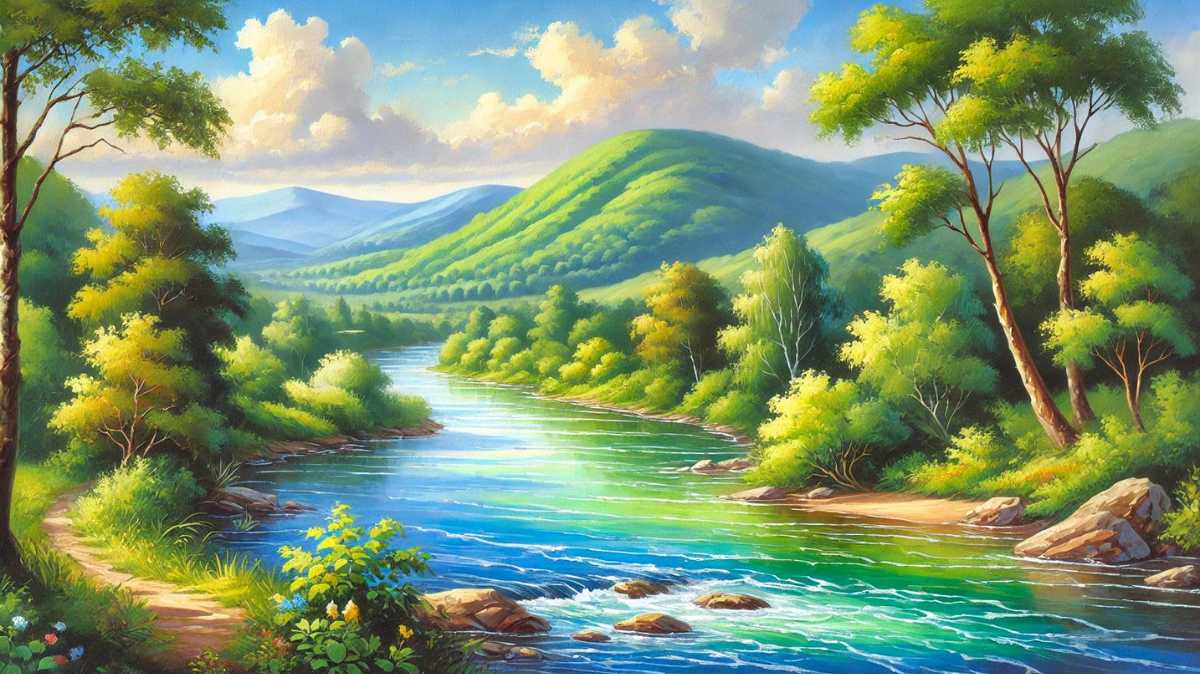If you’ve ever dabbled in painting, you may have encountered gouache, a unique and versatile medium often compared to watercolor and acrylics. But what does gouache do that makes it stand out in the world of art? From its striking opacity to its matte finish, gouache has a lot to offer both beginners and seasoned artists alike. In this article, we’ll explore gouache’s key properties, its history, and how to best use it for your creative projects.
What is Gouache?
Gouache is a water-based paint that combines the best of both watercolor and acrylic paints. Like watercolor, it is reactivated with water after drying, but unlike watercolor, gouache is opaque. This characteristic allows for more coverage and vibrant colors, making it a favorite among artists for creating bold and flat washes.
Key Properties of Gouache
- Opacity: Gouache is known for its ability to completely cover previous layers of paint, which makes it ideal for corrections or adding highlights.
- Matte Finish: Gouache dries to a smooth, non-reflective surface, which can make artwork look professionally finished without needing varnish.
- Blendability: Artists appreciate gouache for its ability to blend smoothly while maintaining color vibrancy, allowing for subtle transitions and gradients.
- Fast-Drying: Gouache dries quickly, making it perfect for projects that need to be finished in a timely manner.
What Can You Do with Gouache?
1. Illustrations and Fine Art
Because gouache offers both precision and boldness, it’s frequently used in illustrations, comics, and children’s books. Its vibrant colors and ability to create clean edges make it a preferred choice for artists who need high control over their medium.
2. Poster Design and Commercial Art
In the early 20th century, gouache became popular in commercial settings. Artists used it for poster designs, advertising, and other mass-printed artwork because of its matte finish, which made reproductions easy. The opacity also allows for bright, punchy colors that stand out in visual communication.
3. Layering and Reworking
One of gouache’s unique traits is its ability to be layered and reworked. Even after the paint dries, you can reactivate it with water to make adjustments. This is a valuable feature for artists who like flexibility or need to make last-minute changes to their work.
How Gouache Compares to Other Paints
Gouache vs. Watercolor
While gouache and watercolor are both water-based, the major difference is in their opacity. Watercolor is transparent, allowing the paper or layers beneath to show through. Gouache, on the other hand, is designed to cover, giving it the ability to stand out on darker papers or when working over previous layers.
Gouache vs. Acrylics
Compared to acrylic paint, gouache is less permanent. While acrylics dry to a waterproof finish, gouache remains soluble in water, allowing for reworking. Acrylics can be used for layering, but once dry, they cannot be reactivated.
Tips for Working with Gouache
- Use Heavy Paper: Because gouache can be reactivated with water, it’s important to use a thick paper, like watercolor paper, that won’t warp or tear.
- Experiment with Brushes: Gouache works well with a variety of brushes. For details, use fine, stiff brushes, and for large washes, softer brushes are ideal.
- Test Wet and Dry Techniques: Gouache is versatile in its techniques. You can apply it like watercolor for soft effects or use it thick for full opacity.
How to Protect Your Gouache Artwork
Since gouache dries to a matte, water-sensitive finish, it’s essential to protect your artwork. You can use a spray varnish or frame your finished piece behind glass to prevent smudging or accidental water damage.
Bottomline
Gouache is an incredibly versatile medium that bridges the gap between watercolor and acrylic. Its opacity, matte finish, and reworkability make it a favorite for both fine art and commercial projects. Whether you’re a beginner looking to experiment with new techniques or a professional in need of a reliable medium, gouache offers the flexibility and vibrancy that many artists crave.
FAQs
1. Can gouache be mixed with other paints?
Yes, gouache can be mixed with watercolors and even acrylics for different effects, though its unique properties may be diminished.
2. How long does gouache take to dry?
Gouache dries relatively quickly, typically within minutes, depending on the thickness of the application.
3. Is gouache permanent?
Unlike acrylics, gouache is not waterproof and can be reworked with water after drying.
4. Can gouache be used on canvas?
While primarily used on paper, gouache can be applied to primed canvas, though its water solubility may affect durability.
5. Does gouache fade over time?
Gouache can fade if exposed to direct sunlight, so it’s best to store artwork away from UV light or use protective measures.
Author

An aspiring business leader, I am working towards my dream of graduating from Stanford University with a degree in Business Management. Passionate about sharing knowledge, I strive to empower others through education and collaborative learning.
View all posts


